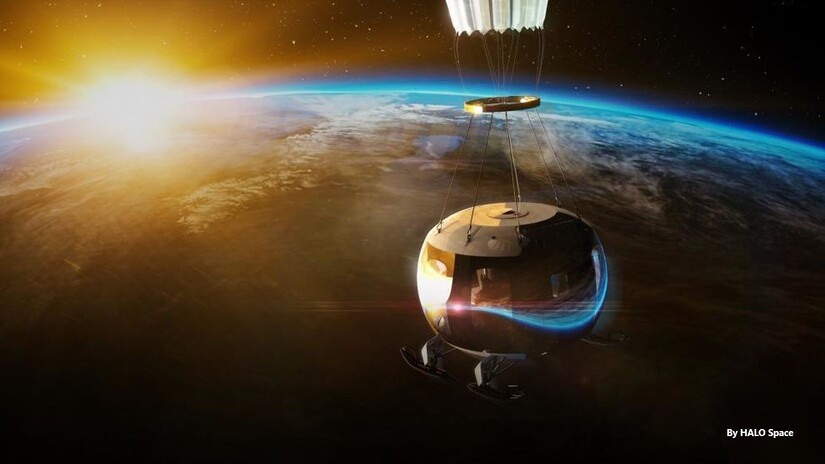HALO Space successfully completes second battery of test flights

HALO Space, the space tourism company with which GMV collaborates, recently carried out the second round of test flights for its space tourism trips in the dry lake of Cuddeback (California, USA), a habitual area for experimental flights.
This phase involves the execution of a series of flights, four in particular, as a proof of concept. These tests are performed by lifting the capsule with a helicopter to an altitude of 2,000 meters. The speed of descent of the capsule with the parachute is less than five meters per second, with a glide ratio of 3.5 to 1, i.e. for every meter it descends vertically, it advances 3.5 meters horizontally. For the final approach, the capsule glides in a straight line against the wind, landing just as an airplane does.
To carry out these test flights the prototypes of both the flight segment elements and those developed by GMV on the ground are already being used: a trajectory prediction algorithm based on a physical model of the atmosphere and its effects on a balloon (BFPS or Balloon Flight Path Simulator, developed by GMV in Spain), fed by a telemetry reception, processing and storage system (MCS or Mission Control System, developed by GMV in Romania).
HALO Space carried out its first test flight in December 2022 in Hyderabad (India), where it successfully lifted its prototype capsule to a height of 37 kilometers with a stratospheric hydrogen-powered balloon.
GMV, as a top-level partner of HALO Space's industrial consortium, is currently in charge of the ground control centers incorporating the flight planning and ground monitoring systems of the onboard elements (capsule, balloon, parachute and parafoil) as well as navigation support for the pilot. GMV is also collaborating in the definition of flight profiles and operational aspects for future certification during the following phases of the project.
HALO Space plans to start operating commercial flights in 2025 and plans to make 400 trips a year from 2029 onwards, taking more than 3,000 passengers up into the stratosphere in its zero-emissions air balloons.